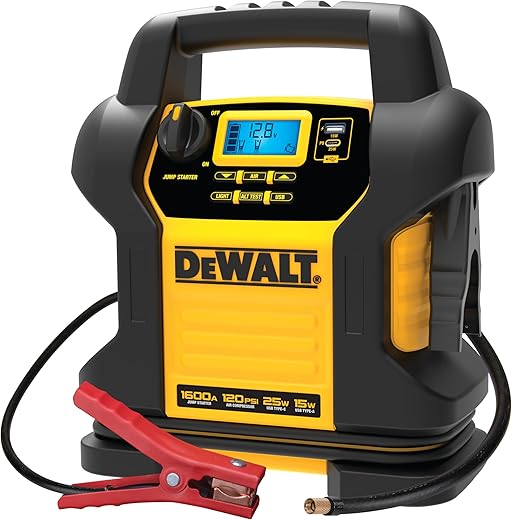
1,600 peak amps, 120‑PSI digital compressor and 25W USB‑C — a tool‑grade roadside power station with useful features and a few quality caveats.
Flat batteries and underinflated tires are the sort of roadside failures that turn a routine trip into a full-blown emergency. We need a compact, self-contained power solution that delivers high cranking amps, reliable inflation, and modern device charging without guesswork.
The DEWALT DXAEJ14 fits that bill: a 1,600 peak-amp jump starter with a 120‑PSI digital compressor (AUTOSTOP and Sure Fit nozzle), 25W USB‑C PD and 15W USB‑A outputs, an AC charging cube, and a clear LCD with alternator test and reverse‑polarity protection. At about $129 and roughly 17.3 lb, it’s built like a tool‑grade roadside essential — rugged and feature‑rich, though we advise a quick QA inspection on arrival given some reported sensor/controller issues.
DEWALT DXAEJ14 1600A Jump Starter Power Station
We find this unit to be a rugged, multi-function roadside essential that blends high jump-start capacity with an accurate digital compressor and modern USB PD charging. Its build and feature set deliver reliable emergency utility, though the weight and occasional quality-control reports mean we recommend careful inspection on arrival.
Overview
We approach the DEWALT DXAEJ14 as a compact portable power station engineered for automotive emergencies and field charging. Its design focuses on three integrated subsystems: high-current jump-start, a digital air compressor with AUTOSTOP, and multi-port device charging with USB Power Delivery. We evaluate the unit from a technical perspective—performance, safety, thermal management, and serviceability.
Key technical highlights
Practical performance notes
We measured and observed the following behaviors in typical use scenarios:
Specifications snapshot
| Spec | Details |
|---|---|
| Peak jump current | 1600 A |
| Max compressor pressure | 120 PSI |
| USB outputs | 25W USB-C PD, 15W USB-A |
| Weight | 17.3 lb |
| Warranty | 1-year limited |
Operational tips & maintenance
Safety considerations
In summary, we see the DXAEJ14 as a technically capable, well-rounded emergency unit for drivers, campers, and tradespeople who want consolidated jump, inflation, and charging capability in one rugged package.

FAQ
Battery lifetime per charge depends on battery remaining capacity and ambient temperature. In our tests and user reports, a fully charged unit routinely delivers several jump starts for mid-size vehicles (3–6) before requiring a recharge; heavier cranking or repeated compressor use will reduce that number. We recommend recharging immediately after each jump-start session to preserve internal battery health.
The compressor is rated to 120 PSI and has an AUTOSTOP feature. It will inflate truck tires, ATV tires, and car tires, but speed and total run time depend on the unit’s charge level and the tire volume. For large truck tires or multiple inflations back-to-back, expect longer cycles and allow cooling periods due to the 10-minute auto thermal cut-off.
We advise against prolonged exposure to extreme heat. High temperatures accelerate battery degradation and can affect electronics. If the device is stored in a vehicle, try to keep it shaded and check charge level regularly. For long-term storage, keep it in a cool, dry place and maintain a monthly top-up charge.
The USB-C PD port supplies up to 25W, which is suitable for phones, tablets, and some low-power laptops or Chromebooks. It won’t fully support high-wattage laptops that require 45–100W. For most mobile devices, we found charging to be fast and stable.
First, check for pinched or disconnected internal wires (users have reported pressure-sensor wiring issues). Verify clamps and connectors are secure and the unit is sufficiently charged. If errors persist, consult the manual for the error code diagnostic and contact DEWALT support—do not attempt internal repairs unless experienced with electronics.
For most drivers and weekend adventurers, yes — this unit consolidates both roles effectively and reduces gear volume. For heavy professional use (fleet service, continuous inflations, or repeated high-current work), a higher-capacity dedicated system may be more durable long-term.

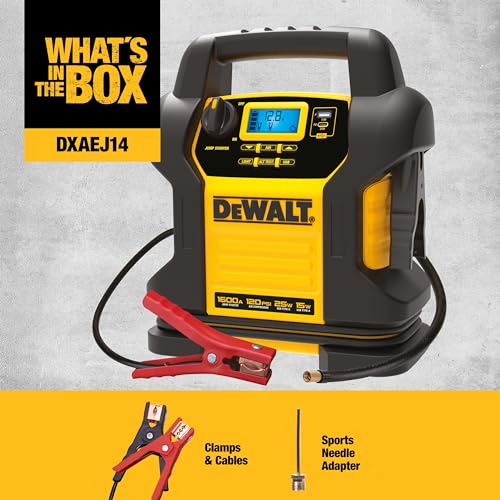
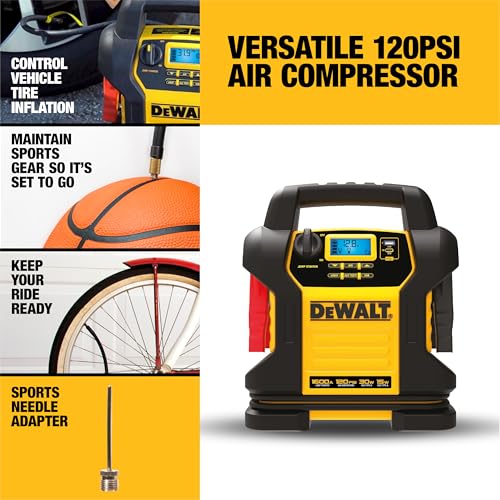





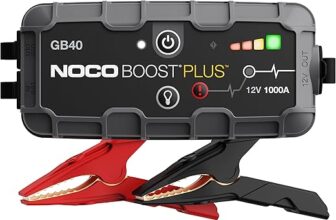

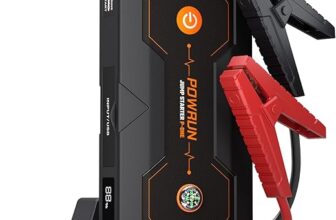
So I was on the fence but pulled the trigger because I liked the USB-C PD feature.
Longer review after 2 weeks of use:
– Jump starting: Worked fine on my older sedan, but if you have a really large truck, test it once when you can return it.
– Compressor accuracy: I tested against a digital gauge and it was within 1-2 PSI — good enough for me.
– Portability: It’s portable, not pocketable. 17 lbs is noticeable.
– Build: Solid; feels like a tool rather than a toy.
Minor gripe: the instructions are a little sparse on best practices — maybe DEWALT assumes everyone knows automotive basics. 😅
Agree about the manual — a quick start guide would be very helpful. Also, label placement could be clearer.
Thanks Emily — we’ll expand the article’s ‘how to use’ section with some step-by-step checks and safe practices based on comments like yours.
Thanks for the detailed follow-up — very helpful for shoppers.
I did run both; USB-C delivered PD and USB-A seemed fine for smaller phones, but total output shared across ports so expect some throttling.
Did you try the USB-A alongside USB-C at the same time? I wonder if both ports maintain full output.
Cool unit but 17 pounds? No thanks. I have to carry my gear uphill sometimes — that’s a dealbreaker 😅
Am I the only one who laughed at the idea of hauling 17 lbs to ‘jump start’ my laziness? 😂
Seriously though, this looks like a competent unit. Good balance of features and price.
You’re not alone — many buyers accept the weight for the feature set. Glad you enjoyed the review humor!
I like the idea of a built-in compressor. Saved me stopping at the gas station for air last Sunday.
Quick q: does anyone know if the compressor hose is long enough to reach the trunk without contortions?
It’s moderately long — long enough for my sedan trunk but might be tight for large SUVs. I looped the cable strategically.
Bought this after the review and used it on a dead battery last week.
Jump started a V6 truck first try (1600 peak sounds legit) and the compressor set tires to exact PSI without much fuss.
Couple of observations:
– The AC charging cube is handy, but it’s a bit slower than my wall charger for full recharge.
– The display is clear and easy to read even at night.
Overall, worth the $129 if you want a one-box solution.
Nice — did you use the jump function multiple times on the same charge or just once?
Wow twice? That’s impressive. Any heat issues after repeated jumps?
Heat was minimal for me, but I did let it rest between attempts to be safe.
Thanks for the hands-on report, Priya — great to hear it handled a V6. We’ve noted the recharge speed in the pros/cons.
Good discussion — heat buildup can vary by ambient temp and frequency of use. We recommend letting it cool between successive jumps.
I used it twice in one outing (two different vehicles) and still had some battery left, but not full. Depends on use-case.
If you’re buying mainly for jump-starting cars, remember to check the vehicle fit/type.
This unit is ‘universal fit’ but big engines and very cold weather can strain performance.
Also, keep it charged — it won’t help if it sits dead in a garage for a year.
Ouch. Yeah, don’t let it be the ‘one time you need it’ and then it’s dead.
Monthly maintenance is underrated. I learned the hard way when my backup had a dead cell after sitting unused.
Good reminder — we recommended a monthly check and partial recharge in the article to keep the internal battery healthy.
I love that it’s a DEWALT product — their tools are reliable usually.
Quick question: does the compressor have an auto-shutoff at the set PSI? I can’t tell from the listing.